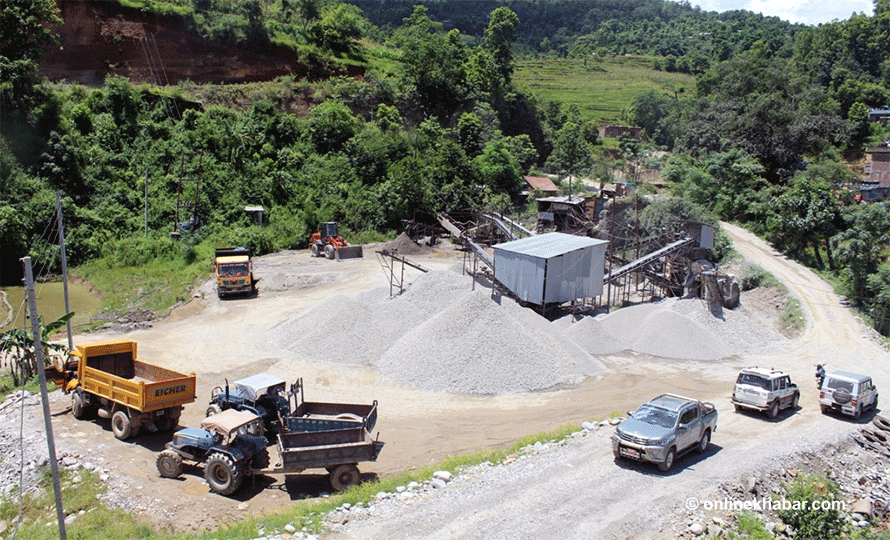
Born and raised in a small village nestled in the hilly regions beneath the Chure Hills in Nepal’s Far Western region, I have spent over eight years working in the livelihood and agriculture sector, focusing on monitoring, evaluation, and learning activities. Throughout my travels across Nepal’s hills, high hills, and mountains, I have witnessed firsthand the devastating effects of environmental degradation.
Landslides, erosion, and the accumulation of debris have become disturbingly common, transforming our once-stable landscapes into shaky terrains.
Experiencing change in hills and mountains
During my travels in about 30 districts, I encountered dry river streams and witnessed their transformation during the monsoon season. The sound of rushing water, mixed with rocks, soil, sand, and gravel, served as a stark reminder of how close our hills and mountains are to collapsing.
The impacts of climate change are severely disrupting the lives of Nepali people, particularly those in remote, marginalised, and poor communities. Climate change accelerates temperature rise, leading to unpredictable and extreme weather conditions such as heavy rainfall, irregular seasons, cold waves, and heat waves.
These climatic changes exacerbate soil erosion, landslides, and flooding. In the hills and mountains of Nepal, water resources are drying up, leading to an escalating food crisis. Human casualties and loss of livelihoods are becoming more frequent.
In 2023, Nepal recorded 104 deaths due to landslides, floods, and lightning, with 6,083 families affected by these disasters. This was a slight decrease from 2022, when 118 people died in flood-related incidents, 99 in landslides, and 87 in lightning strikes. These statistics illustrate a grim reality where the impacts of climate change are not just environmental but deeply socio-economic, forcing communities to live in constant danger and eroding their means of subsistence, perpetuating a cycle of poverty, migration and vulnerability.
Understanding the need for complexities of erosion

In the midst of global discussions on climate change, it’s crucial to focus on the state of our hills and highlands. These regions are often overlooked, yet they play a vital role in our ecosystem and are vulnerable to various forms of degradation. Research reveals that the rocks in these regions are geologically young and weak, making them prone to landslides and soil erosion. The consequences of this degradation are evident, especially during the rainy seasons.
The floods in Melamchi in 2021 and Mustang in 2023 highlight the severe impact of hillside erosion. These disasters, though visibly striking near human settlements, represent only a fraction of the erosion-related incidents occurring across hill regions. Addressing hill erosion requires urgent and concerted action. While some efforts have been made, they are insufficient against the magnitude of the problem. Temporary solutions are not enough; we need comprehensive research to understand the complexities of erosion in these terrains and devise sustainable solutions.
Our mountains and hills are dynamic, tectonically active landscapes facing constant pressure and disintegration. The balance between erodibility and erosion resistance makes these areas susceptible to human-induced disturbances like deforestation and unsustainable construction practices. Understanding and respecting this equilibrium is vital for managing the risks posed by landslides, erosion, and river dynamics.
Nepal is highly vulnerable to climate change due to its unique topography and geological characteristics. According to a study by the international organisation ‘German Watch,’ Nepal ranks 10th among countries at high risk from climate change. The impacts of rising temperatures are more pronounced in the Himalayan region, leading to increased snowmelt, the formation of new glacial lakes, and a higher risk of glacial lake outburst floods.
From my personal experience, I have observed significant changes in my village. About 10 years ago, the water levels would rise during rains, but there were not as many pebbles and sediments being washed away. This makes it crucial for us to take the right actions to prevent such erosion. Nepal’s hills and mountains, especially the youngest range, the Chure Hills, are very fragile and unstable. The erosion of these hills is exacerbated by human activities, sudden weather changes, and rising temperatures.
The politicisation of this issue has turned it into a topic of debate rather than a problem to be solved. Effective solutions have not reached the regions, communities, and individuals most at risk. Experts are busy talking, discussing, holding meetings, and giving interviews, but the focus remains on risk reduction rather than addressing the root causes of the problem. This is something I have experienced firsthand.
One striking incident is when experts arrive in petrol/diesel cars, with air conditioning on full blast, drinking water from plastic bottles, and then lecture villagers on climate change and reducing carbon emissions. There is a clear disconnect between their words and actions. We can make a difference, but it starts with changing ourselves. We need to align our words and actions, making our daily practices environmentally friendly.
In a country with such geographical diversity and facing the impacts of climate change, the government needs not only to voice compensation demands but also to press developed nations, which emit a significant amount of carbon, to adopt collective measures for reduction. This calls for advocacy aimed at achieving meaningful and effective results.
Our hills and mountains are not just environmental concerns; they are societal imperatives. We must prioritize research, sustainable development practices, and proactive measures to safeguard these critical landscapes for generations to come.
























